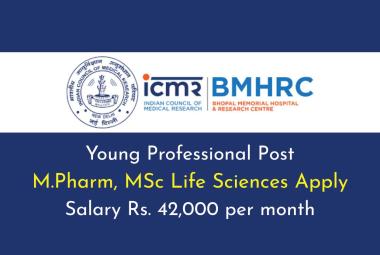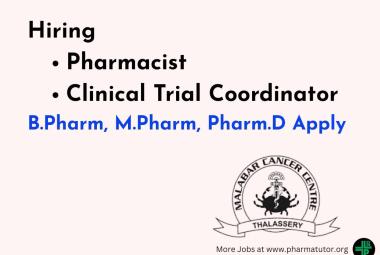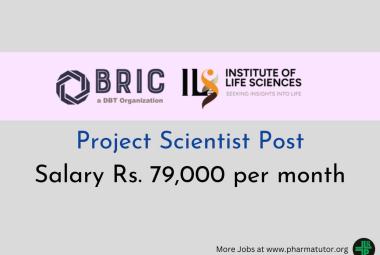{ DOWNLOAD AS PDF }
ABOUT AUTHOR:
Amitava Sinha Ray
Ranbaxy Laboratories Ltd
West Bengal, India
a.amitava.s@gmail.com
ABSTRACT
Cancer is basically a disease of cells characterized by a shift in the control mechanism which is associated with cell differentiation. In most cases causes of cancer is multifactorial. Cancer is the second most causes of death after heart disease. Cytotoxic chemotherapy for cancer offers cure for only certain type of cancer. Chemotherapy may prolong the life. Chemotherapy provides palliative rather than curative therapy at present.
REFERENCE ID: PHARMATUTOR-ART-2274
|
PharmaTutor (ISSN: 2347 - 7881) Volume 2, Issue 11 Received On: 07/09/2014; Accepted On: 15/09/2014; Published On: 01/11/2014 How to cite this article: AS Ray; Mitomycin C: A Useful Anticancer Drug; PharmaTutor; 2014; 2(11); 56-58 |
INTRODUCTION
Chemotherapy is a type of cancer treatment that uses chemical substances, especially one or more anti-cancer drugs (chemotherapeutic agents) that are given as part of a standardized chemotherapy regimen. Chemotherapy may be given with a curative intent, or it may aim to prolong life or to reduce symptoms. Along with hormonal therapy and targeted therapy, it is one of the major categories of medical oncology. These modalities are often used in conjunction with other cancer treatments, such as radiation therapy, surgery, and/or hyperthermia therapy. The anticancer drugs either kill cancer cells or modify their growth. However, selectivity of majority of drugs is limited and they are one of the most toxic drugs used in therapy.[1]
Chemotherapy works by stopping or slowing the growth of cancer cells, which grow and divide quickly. But it can also harm healthy cells that divide quickly, such as those that line your mouth and intestines or cause your hair to grow. Damage to healthy cells may cause side effects.
Table: List if anticancer drug[2]
|
Cancer type |
Drugs |
|
Breast cancer |
Cyclophosphamide, methotrexate, 5-fluorouracil |
|
Doxorubicin, cyclophosphamide |
|
|
Hodgkin's disease |
Mustine, vincristine, procarbazine, prednisolone |
|
Doxorubicin, bleomycin, vinblastine, dacarbazine |
|
|
Non-Hodgkin's lymphoma |
Cyclophosphamide, doxorubicin, vincristine, prednisolone |
|
Germ cell tumor |
Bleomycin, etoposide, cisplatin |
|
Stomach cancer |
Epirubicin, cisplatin, 5-fluorouracil |
|
Epirubicin, cisplatin, capecitabine,mitomycin c |
|
|
Bladder cancer |
Methotrexate, vincristine, doxorubicin, cisplatin |
|
Lung cancer |
Cyclophosphamide, doxorubicin, vincristine, |
|
Colorectal cancer |
5-fluorouracil, folinic acid, oxaliplatin |
ANTIBIOTICS USED IN CHEMOTHERAPY
a) Actinomycin D
b) (Dactinomycin)
c) Doxorubicin
d) Daunorubicin
e) (Rubidomycin)
f) Mitoxantrone
g) Bleomycins
h) Mitomycin C
Majority of the cytotoxic drugs have more profound effect on rapidly multiplying cells, because the most important target of action are the nucleic acids and their precursors; rapid nucleic acid synthesis occurs during cell division. Many cancers (especially large solid tumours) have a lower growth fraction (lower percentage of cells are in division) than normal bone marrow, epithelial linings, reticuloendothelial (RE) system and gonads. These tissues are particularly affected in a dose-dependent manner by majority of drugs; though, there are differences in susceptibility to individual members.
a) Depression of bone marrow
b) Lymphocytopenia and inhibition of lymphocyte function
c) stomatitis as an early manifestation of toxicity.
d) Diarrhoea, shedding of mucosa, haemorrhages occur due to decrease in the rate of renewal of the mucous lining.
e) Nausea and vomiting are prominent with many cytotoxic drugs.
f) Inhibition of gonadal cells causes oligozoospermia.
Mitomycin C:
A methyl azirinopyrroloindoledione antineoplastic antibiotic isolated from the bacterium Streptomyces caespitosus and other Streptomyces bacterial species. Bioreduced mitomycin C generates oxygen radicals, alkylates DNA, and produces interstrand DNA cross-links, thereby inhibiting DNA synthesis. Preferentially toxic to hypoxic cells, mitomycin C also inhibits RNA and protein synthesis at high concentrations.[3]This highly toxic drug is used only in resistant cancers of stomach, cervix, colon, rectum, bladder, etc. It is transformed intracellularly to a form which acts as an alkylating agent and kills cells in G1-M phases.[1]The mitomycins are a family of aziridine-containing natural products isolated from Streptomyces caespitosus or Streptomyces lavendulae.[4]
MODE OF ACTION:
The activation of Mitomycin-C begins with the reduction of the quinone structure. One-electron reduction is mediated by cytochrome P-450 reductase, xanthine oxidase, cytochrome b5 reductase, etc., and two-electron reduction is mediated by DT-diaphorase, xanthine dehydrogenase, etc.[5]
Mitomycin-C is metabolized to a number of active forms by enzymatic reduction (Figure 1), which are thought to exert antineoplastic activity through the formation of cross linkage to DNA (interstrand cross-link and intrastrand cross-link), alkylation, and DNA strand breakage with free radicals
Mitomycin C is an antibiotic that inhibits the synthesis of DNA. Serum half-life after a 30 mg bolus injection is 17 min. Primarily hepatic metabolism. Clearance rate is inversely proportional to maximal serum concentration because of saturation of degradative pathways. The percent excreted in urine increases with increasing dose.
Interactions:-Use of vinca alkaloids in patients who have previously or simultaneously received mitomycin has resulted in acute shortness of breath and severe bronchospasm.[6]
Adverse Reactions:
a) DERMATOLOGIC: Alopecia; desquamation; pruritus.
b) GI: Moderate to low potential for nausea and vomiting; anorexia; mucositis; GU: Amenorrhea.
c) HEMATOLOGIC: Bone marrow suppression;
d) RENAL: Increased serum creatinine and BUN; glomerular sclerosis
e) RESPIRATORY: Interstitial pneumonitis; pulmonary fibrosis.
CONCLUSION
Mitomycin is useful for Palliative treatment of disseminated adenocarcinoma of stomach or pancreas.Bladder, colorectal, or breast cancer; squamous cell carcinoma of head and neck, lungs, or cervix; pterygium.Administration of mitomycin c is effective as IV, intra-arterial, or intravesical.Administer by IV push injection or IV side arm into a running infusion.
REFERRENCE:
1. Essentials of Medical Pharmacology: Sixth Edition :KD TRIPATHI;page 597-599
2. Corrie PG, Pippa G. (2008). "Cytotoxic chemotherapy: clinical aspects". Medicine 36 (1): 24–28. doi:10.1016/j.mpmed.2007.10.012.
3. cancer.gov/drugdictionary?CdrID=42674
4. Danshiitsoodol N, de Pinho CA, Matoba Y, Kumagai T, Sugiyama M (2006). "The mitomycin C (MMC)-binding protein from MMC-producing microorganisms protects from the lethal effect of bleomycin: crystallographic analysis to elucidate the binding mode of the antibiotic to the protein". J Molec Biol 360 (2): 398–408. doi:10.1016/j.jmb.2006.05.017. PMID 16756991.
5. Cummings J et al. Eur J Cancer 1995; 31A: 1928-33
6. 1657.A to Z Drug Facts (A to Z Drug Facts, 4th ed) by David S. Tatro and Facts and Comparisons
NOW YOU CAN ALSO PUBLISH YOUR ARTICLE ONLINE.
SUBMIT YOUR ARTICLE/PROJECT AT editor-in-chief@pharmatutor.org
Subscribe to Pharmatutor Alerts by Email
FIND OUT MORE ARTICLES AT OUR DATABASE










